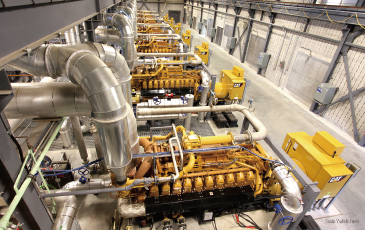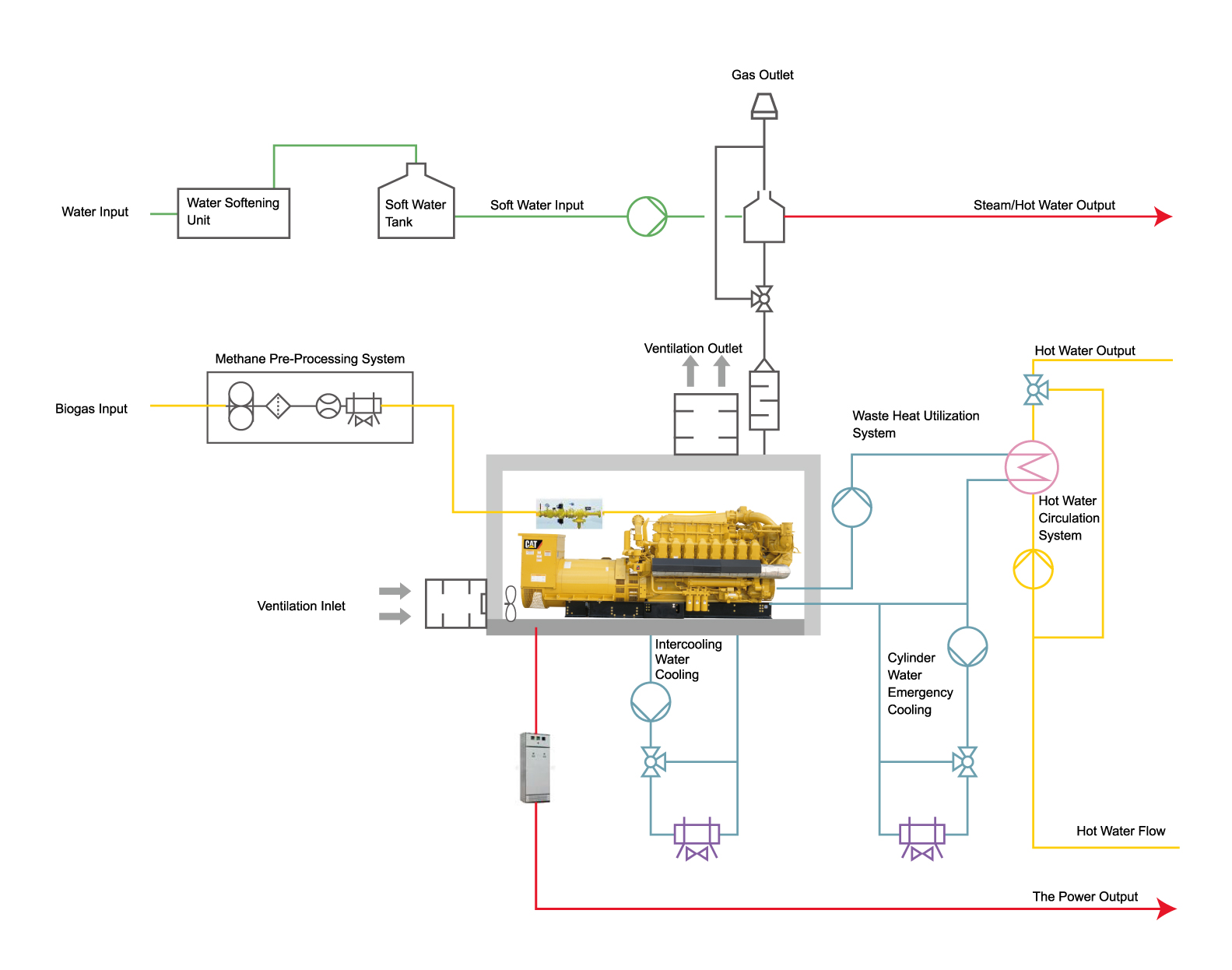

Biogas/landfill Gas Application
Biogas power generation is a biogas utilization technology that has emerged along with the continuous development of large-scale biogas digesters and comprehensive utilization of biogas. Organic matter (such as crop straw, weeds, human and animal waste, garbage, sludge, municipal sewage and industrial organic wastewater), under anaerobic conditions, through a large variety of catabolism of various types of microorganisms And eventually produce biogas. The use of biogas generated by anaerobic fermentation treatment on the engine not only solves environmental problems in biogas projects, consumes a large amount of waste, protects the environment, reduces greenhouse gas emissions, but also turns waste into treasure, generating a large amount of Thermal energy and electrical energy are in line with the environmental protection concept of energy recycling, and also bring huge economic benefits.
 Biogas As An Energy Source
Biogas As An Energy Source
Anaerobic fermentation of various organic substances produced in agriculture, food industry and feed processing is a highly valuable means of utilization. This approach differs from composting organic matter, which is a mixture of methane and carbon dioxide that is produced by anaerobic fermentation and can be used as a high-energy and renewable fuel to replace fossil fuels. Through the use of biogas by gas-fired internal combustion engines, biogas can be safely consumed, and energy conversion that is effective and environmentally friendly can be achieved.
Advantages Of Using This Energy
1Provide another way to deal with livestock solid waste and bio-waste while using ittebiz instead of traditional fuel
2Reduce greenhouse gas emissions
3Achieve high efficiency combined heat and power
4The residual material in the fermenter can be used as a high-quality agricultural organic fertilizer. This fertilizer has a high pH value, eliminates acidity and is rich in nutrients and has almost no odor emission.
 Landfill Gas As Energy
Landfill Gas As Energy
Landfill gas is produced when organic matter is decomposed and consists mainly of methane (CH4), carbon dioxide (CO2) and nitrogen (N2). In order to prevent the gas from being uncontrolled, the release hinders the landfill from rapidly reducing to the soil as planned, preventing the spread of odor, low-temperature combustion or gas transfer, and must continuously and controlly extract the landfill gas as a high-efficiency value of the gas engine. The fuel is effectively used to generate electricity.
Advantages Of Using This Energy
1Landfill gas is a new energy source compared to traditional fuels.
2Convert harmful gases into energy
3Reduce or avoid the release of methane gas into the atmosphere
4High efficiency of power generation by gas engine
 Main Scope Of Application
Main Scope Of Application
Anaerobic fermentation of various organic substances produced in agriculture, food industry and feed processing is a highly valuable means of utilization. This approach differs from composting organic matter, which is a mixture of methane and carbon dioxide that is produced by anaerobic fermentation and can be used as a high-energy and renewable fuel to replace fossil fuels. Through the use of biogas by gas-fired internal combustion engines, biogas can be safely consumed, and energy conversion that is effective and environmentally friendly can be achieved.
 Operation mode
Operation mode
1Electrical energy: generator sets generate electricity through biogas
2Thermal energy: production of hot water and steam through waste heat
 Design Principles
Design Principles
1Determine the amount of electricity generated by biogas production, and determine the heat output by generating electricity.
2Balance safety and reliability, operation and maintenance convenience, and economical operation
 Process flow
Process flow
